Mode-Locked Technology Sp. z o.o., ul. Klecińska 123, 54-413 Wroclaw,Poland info@mode-locked.com
Technology
Oscillator technology
Mode-Locked Technology has been striving for many years to replace the existing mode-locking technique in laser oscillators based on SESAM (typical problems with degradation and commonly used free space coupling) with a method based on the nonlinear properties of optical fibers.
This approach significantly improves reliability by eliminating the drawbacks of semiconductor absorber SESAM technology. Additionally, it allows for monolithic “all fiber” oscillator designs, greatly enhancing long-term stability and resistance to external conditions.
One important outcome of their research
is solving start behavior issues related to the oscillator.
Another significant development is the ability to tune the laser wavelength over a wide spectral range. This enables individual wavelength matching for specific processes or even generating pulses at previously unreachable wavelengths (such as visible, 2 µm, or mid-IR systems).
Mode-locked Technology has also addressed amplitude and phase noise. By utilizing nonlinear effects in optical fibers, we have significantly reduced amplitude noise. Furthermore, our advanced active stabilization and frequency synchronization techniques (including custom optical components and control electronics) meet the rigorous requirements of scientific systems, such as precise repetition rate stability and Carrier Envelope Offset (CEO) frequency synchronization—essential for optical frequency combs.
In demanding applications, Mode-locked Technology offers custom-designed control electronics to reduce noise resulting from optical pump power fluctuations. If you have any problems or ideas, feel free to discuss them with us!
Stable optomechanical design
Mode-Locked Technology places significant emphasis
On delivering highly advanced systems to end customers, ensuring industrial long-term stability and resilience to external factors.
Achieving these requirements is not feasible using off-the-shelf laboratory components, which is a common practice for many small and medium-sized companies. Consequently, Mode-Locked Technology has not only focused on optical technology development but also invested in an optomechanical platform.
This platform provides previously unattainable stability during system transport and usage. The platform’s flexibility allows for rapid adaptation to various demanding applications, and the integration of 3D printing has significantly enhanced its modularity.


Low-noise technology
To meet the high demands of scientific and modern industrial applications
Mode-Locked Technology provides advanced technology to precisely control and stabilize the parameters of its laser systems, with a particular focus on minimizing amplitude and phase noise.
This is achieved through the development of all-fiber actuators for precise repetition rate control, as well as low-noise phase detectors and PID controllers.
Amplitude noise reduction is further enhanced by the use of our ultra-low-noise laser diode drivers. Additionally, the long-term stability of our systems is improved thanks to unique thermal management technology and actively stabilized output power solutions.
Wavelength conversion
To expand the wavelength coverage of lasers
Our Mode-Locked Technology employs advanced techniques based on nonlinear optical effects, such as soliton self-frequency shift and dispersive wave generation in optical fibers.
For broad spectral coverage in the mid-infrared region, which is crucial for spectroscopy applications, we utilize the difference frequency generation (DFG) technique. DFG guarantees single-pass, high-efficiency conversion into the mid-infrared, covering the range from 5 to 10 µm. Additionally, our systems feature fully automated wavelength tuning, allowing users to easily adjust settings with a single button press.
Our DFG systems also incorporate active output power stabilization, ensuring exceptional stability over extended periods without noticeable power degradation, meeting the demands of the most rigorous spectroscopic experiments requiring long-term averaging and data acquisition.

-
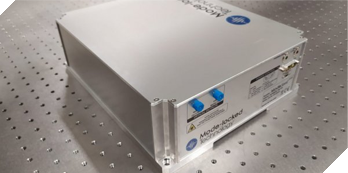
ModeSeed
ModeHybrid is a versatile high power fiber laser system with multiple outputs: 1560 nm, 1060 nm (up to 3W), and an octave-spanning supercontinum. Suited for most demanding scientific and industrial applications.
-
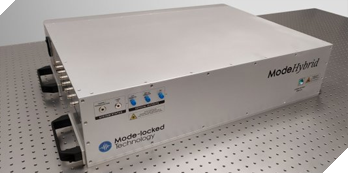
ModeHybrid
ModeHybrid is a versatile high power fiber laser system with multiple outputs: 1560 nm, 1060 nm (up to 3W), and an octave-spanning supercontinum. Suited for most demanding scientific and industrial applications.
-
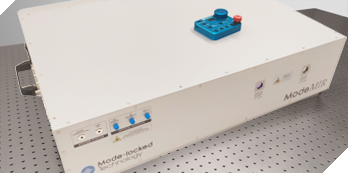
ModeMIR
ModeMIR is a mid-infrared optical frequency comb that delivers broadband radiation in the 3-5 µm and 6-10 µm spectral ranges. Thanks to its active output power stability and automatic wavelength tuning, it is suited to precise metrological applications.
-
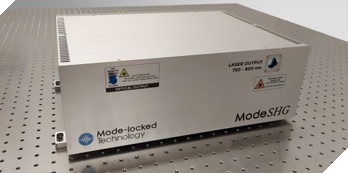
ModeSHG
ModeSHG is a compact, turn-key operated Er-doped fiber laser with second harmonic generation (760-780 nm), and integrated pulse-picker for repetition rate tuning. Ideal for multiphoton and fluorescence microscopy.
-
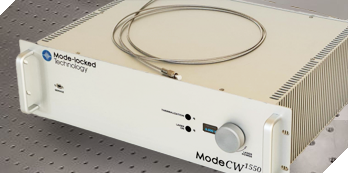
ModeCW
Mode CW is a continuous wave fiber laser system delivering up to 6W in the 1550-1570 nm spectral range with an ultra-low-noise RIN lower than 0.008%. It can serve as a perfect pumping source of Cr:ZnS/Se oscillators.
-
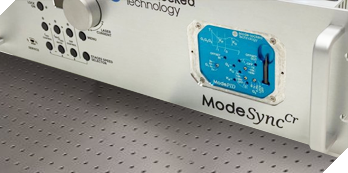
ModeSync
ModeSync is a low-noise electronic system with an integrated PID controller dedicated to carrier-envelope offset frequency stabilization. It allows for the quick realization of an offset-free frequency comb.
-
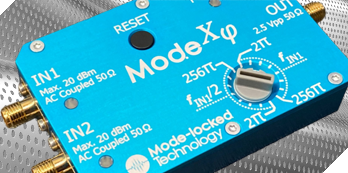
Low-noise electronics
We specialize in low-noise electronic solutions, such as laser diode drivers, PIDs, and phase detectors. These allow the realization of advanced laser systems where frequency stabilization and reduction of phase and amplitude noise are desirable.
-

Custom products
Mode-Locked Technology offers a variety of customized solutions, including femtosecond oscillators, amplifiers, nonlinear frequency conversion modules, laser diode drivers, etc. Contact us for more details!

 ">
">